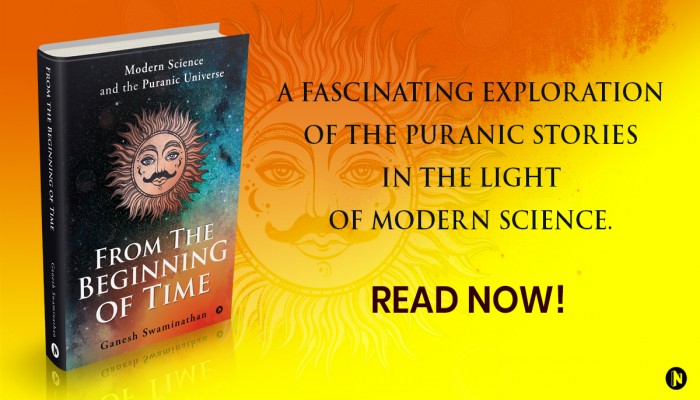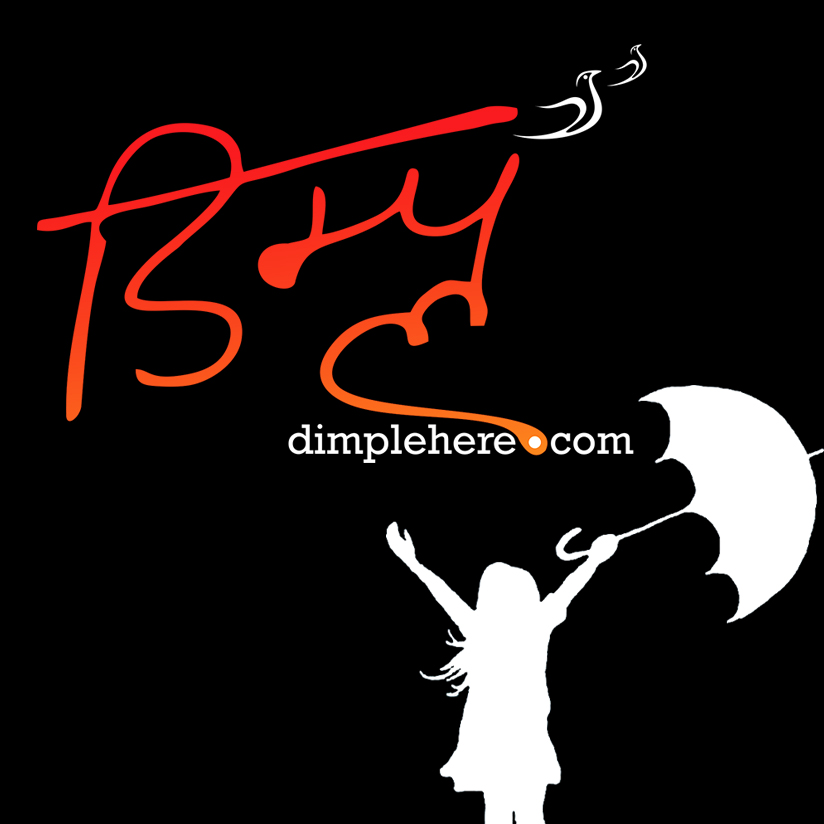MyInd Interview with Ganesh Swaminathan, author of the book, “From the Beginning of Time”
- In
- 11:28 AM, Nov 05, 2020
- Dimple Kaul
- From the beginning of time is your debut book. Before we find out about the book, we would like to know the author. So could you please tell our readers something about yourself first?
I graduated from IIT Delhi with a degree in Mechanical Engineering. I worked as an engineer for a couple of years and then went to the IIM Ahmedabad, where I earned an MBA. Since then, for most of my professional career, I have worked in US multinationals in the field of technology. This has taken me to many countries, including the US, and given me an appreciation of their cultures. I am currently based in Singapore and live here with my wife. I have been an active sportsperson and a voracious reader.
- Have you always been creatively inclined? What inspired you to write this book?
I cannot claim to have ‘always’ been creatively inclined. In school, I dabbled in clay sculpting and tried my hand at sketching at the IIT. In the IIM, I was the secretary of the Film Club. But my colleagues would likely remember me as a basketball player and someone who cycled from Delhi to Kanyakumari, rather than as a creative person.
This book came to me following a sequence of events. When my father was unwell, I would often visit my parents in India. I was mostly at home and had time on my hands. During a conversation, a friend mentioned that he was reading the Egyptian version of Noah and the Ark's flood story. I had read a lot about the Flood stories, they are all over the world, and follow an archetype: A divine warning, a great flood, with drawl of the waters and the restart of creation. The Matsya Purana, from what I had read about it, seemed to follow a similar archetype. So I told my friend that the Matsya Purana was probably the Indian equivalent of the same. We agreed that he would read the Epic of Gilgamesh and I the Matsya Purana, and we would compare notes. I ordered an English translation of the Purana, and so started my journey through the texts.
The Matsya Purana turned out to be a text of great sophistication. I soon went on to read the Shiva Purana and the Bhagavata Purana. Later, when I could not find good imprints of other Puranas, I printed PDFs of old publications from the internet and went on to read the Brahmanda, Kalika and the Devi Purana.
I had been interested in space science from school. I had kept abreast of developments through books, articles and videos. By my fourth Purana, it had become evident that the resemblances of the descriptions of the Sun and the Moon to modern science were more than just happenstance. A few similar looking verses can be dismissed as coincidence, but there were whole passages that were quite close. I started making notes, and the outlines of a book began to take shape.
A couple of years back, when I took a break from corporate life, one of my first thoughts was that I now had the time to write a book. The notes that I had compiled became the source material for this undertaking.
- Why this title?
The word purana in Sanskrit means ‘ancient’. The Puranic stories describe events from the Earth’s distant past. In the Puranic cycle, a Day of Brahma lasts for a Kalpa, about 4.3 billion years. This is preceded by a Night of Brahma, a period during which there is no activity. The book talks about both these periods in some detail. Because of the long Night of Brahma, there is little memory of the previous Kalpa.
Most of the Puranic stories are book-ended by the start and the end of the current Kalpa. The book, at its end, lists out a series of events from the beginning of the present Varaha Kalpa, about 2 billion years ago, and compares them with what we can infer from the geological records. The title refers to a timeline of events beginning with the current creation, the beginning of ‘our’ time as it were.
The story of the Sun’s birth is an event long before the current Kalpa. The Puranas also have references to the beginning of the ‘Universe.’ The book explores these references and how they match modern science. The title also works at this level, which I thought was quite fitting.
In this context, it is useful to cite a verse describing the Puranas existence from the beginning of all of creation:
“Hence, listen to this summary. Narayana creates the world. It is on that occasion of creation when he makes this entire Purana. It does not remain at the time of annihilation.”
Brahmanda Purana Book I, Section i, Ch. 1, v. 174
The verse has been used as the book’s opening quote.
- Who do you think should read this book, and why?
The book should be of interest to people that like to read about the Indian Heritage and texts. Much of the discussion today has been centered around the Ramayana and the Mahabharata. The Puranas have been mined for their stories of moral value, religious practices and cultural symbolisms, and even history. This book explores the Puranas through the lens of science.
This should make it especially interesting for our youth. We have been trained and have gone on to teach our young to be rational and evidence-based. This takes us away from our religious texts whose acceptance is based on faith and not evidence. This book should help our youth realize that there is a lot of science that backs up our ancient texts and energize them to re-engage with these treasures of knowledge.
- What are the key takeaways, that readers could expect, from the book?
The overarching takeaway is that Puranic stories do not just have religious and moral value but that they have an entire cosmology embedded within them. I want to call out a couple of instances.
Hard as it may be to believe, the Puranas have descriptions of the five stages of the lifecycle of the Sun. A 50-minute presentation on this topic has been uploaded onto YouTube and can be accessed here. The birth of the Sun is similar to the story of the birth of the Sun God Martanda. The description of the Red Giant Sun, termed Samvartakaditya, is chilling in its accuracy; a brief 8-minute video explaining this can be accessed here.
Scientists today agree that practically all the water on the Earth’s surface came from outer space. The narrative of Ganga describes the extraterrestrial origins of the Earth's waters. The story of the Moon’s origin parallels what we understand from modern science with some interesting differences.
These events, along with many others, are described in the book, starting with a brief description of the current science.
- Do you have any plans of translating it into Tamil, Hindi and/or other Indian languages?
As the book is presented to various audiences, there has been interest in translating it into regional languages. There are no definite plans just yet.
- What has been your most rewarding moment after the publication of the book, so far?
One of the steps authors take after writing a non-fiction book is to get it ‘peer-reviewed.’ It was hard to find anybody, at least in my immediate circle, that would have domain expertise in the Puranas, space sciences and the geosciences. As a result, the ‘peer-review’ process went as far as testing for the book's logic.
The INDIC Academy took an interest in the book, close to its publication. Dr. Nagaraj Paturi, the Director of the Inter-Gurukula Centre and a polymath, read the book and gave it the thumbs up. I later found out that he had written a Ph. D. paper on the symbolism of the Sun in the Puranas many years ago.
Prof. Mahadevan of IIM Bangalore, and formerly of IIT Delhi, also had a very favorable opinion of the book. To quote:
“What stood out according to me was that you have maintained a wonderful balance between the mere (blind) glorification of the Puranas and arguing that Puranas had all the information that science is saying today.
Presenting Scientific viewpoints and the equivalent perspectives from Puranas side-by-side and leaving the reader to make his/her own judgment and sense of the matter is very good.”
While the book has a lot of science in it, it has been written in a simple language to make it accessible to a non-technical but well-read audience. In that context, to have my mother read the book and give it her thumbs up was probably the most satisfying!
- You have self-published the book. Why did you choose this route? How has your experience been so far?
I started with submitting proposals to some large publishers, but after a lengthy review, none of them accepted. I, therefore, decided to go ahead with self-publishing. I am grateful to the INDIC Academy for choosing to promote the book. They have given this book from a first-time author such as myself, a lot more visibility than a publishing house might have.
- How are you promoting the book?
There has been a lot of interest in hearing about the book. I am in the process of writing articles in various publications, also being interviewed on some platforms. I have made a few presentations that I have put into a YouTube channel called “The Puranic Universe” and have started a blog with the same name. We are exploring if the book can be turned into content for young adults. So quite a few activities to get readers to be aware of the book and engage with the Puranas.
- What should the readers of From the Beginning of time expect from you next?
I have received a lot of favorable feedback about the book but would like to hear more from readers. One option is to expand the book with some additional content.
- Who are your favorite authors?
For the past eight years, from when I started to read the Matsya Purana, I have not read a ‘book’ that is not a Purana! That should explain my level of fascination with these texts. Before this, I have read fiction by Amish Tripathi and the books by Ramesh Menon on the Puranas. The book India by John Keay was an excellent read as well.
- Thank you for your time. Do you have a concluding message for MyIndreaders?
The Puranas are encyclopedic and a vast source of knowledge. Let us re-engage with these texts and unlock the treasures they offer for the benefit of all humankind
Image Credit: Notion Press







Comments